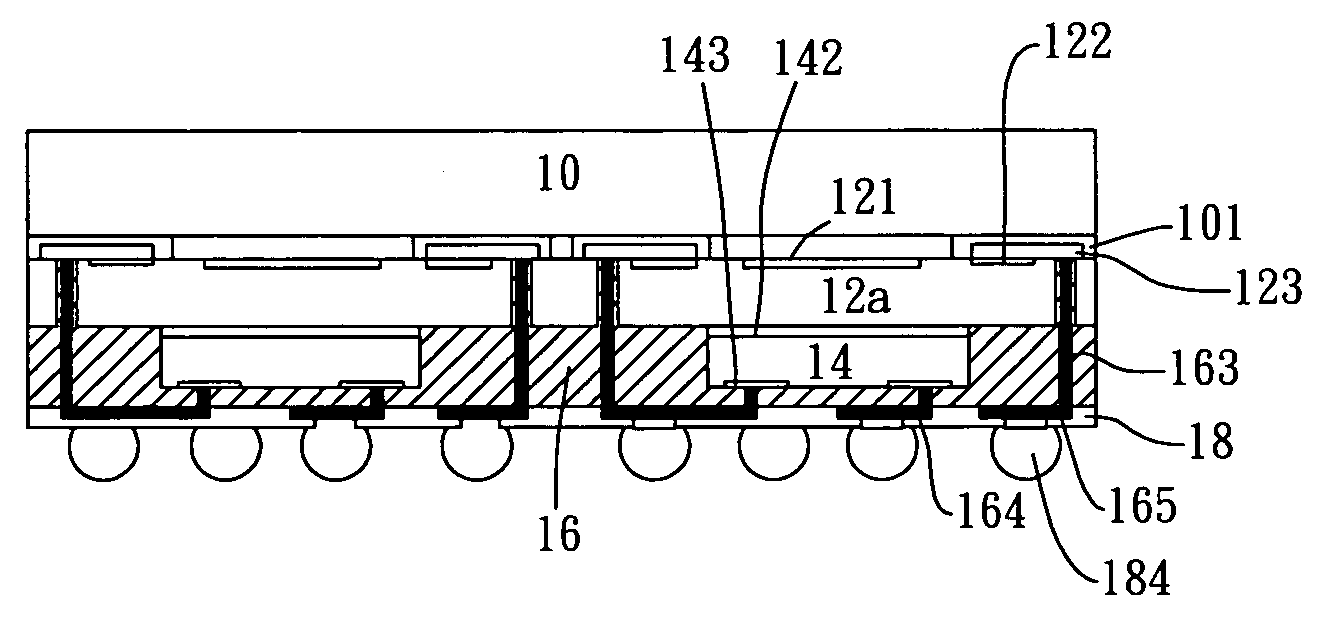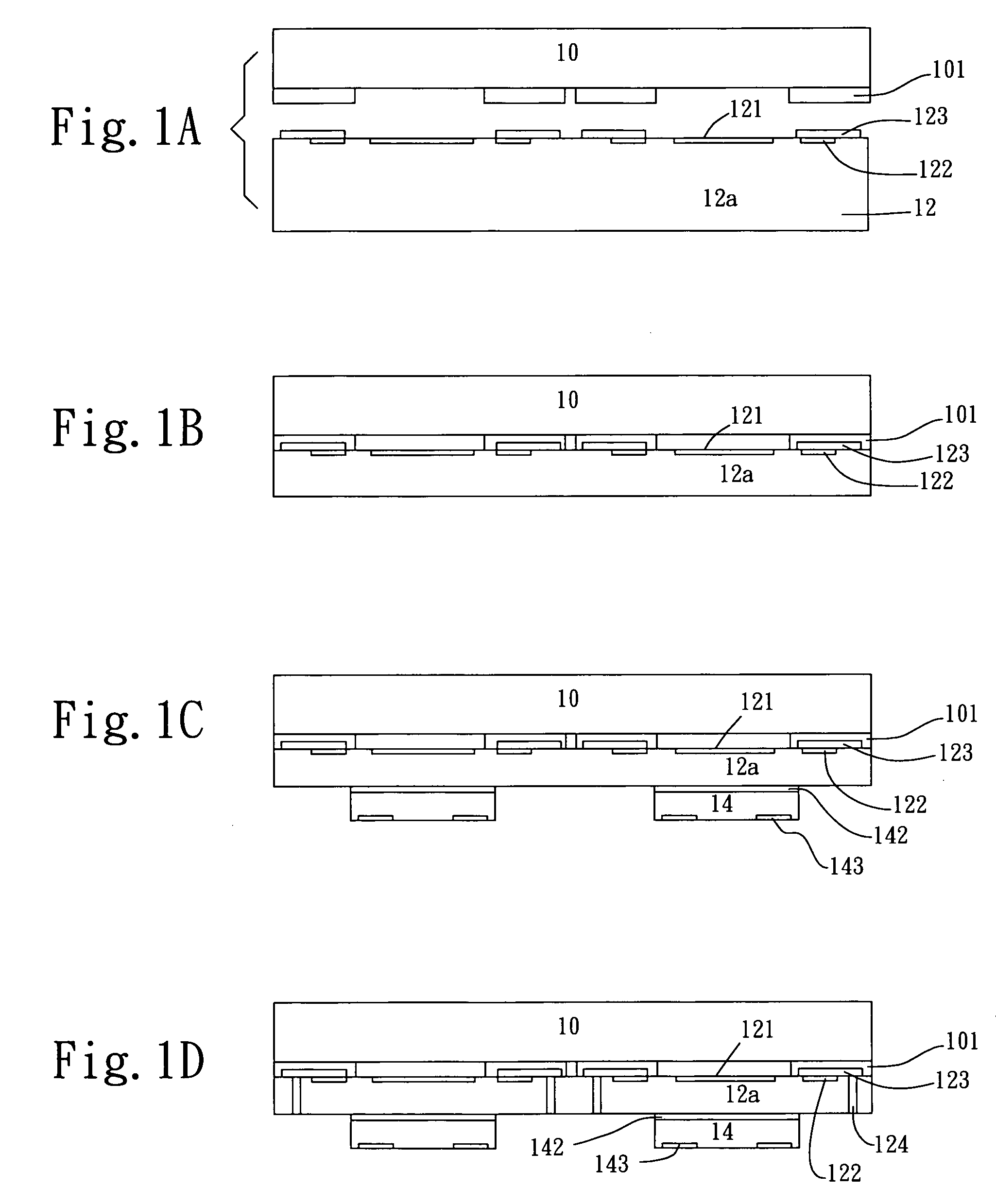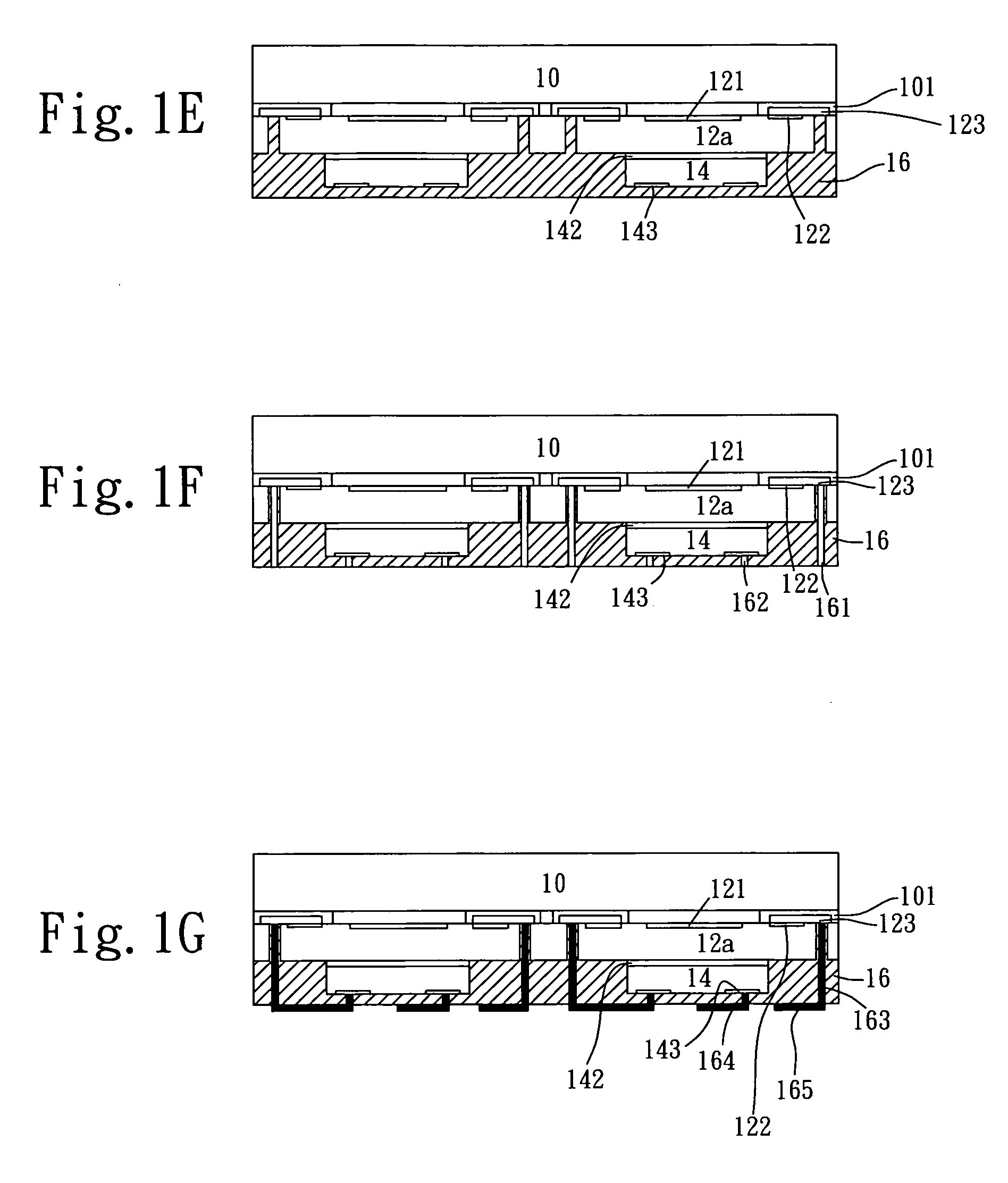Image sensor module with a three-dimensional die-stacking structure
a technology of image sensor module and die-stacking structure, which is applied in the direction of electrical equipment, semiconductor devices, semiconductor/solid-state device details, etc., can solve the problems of large package size, inability to meet the needs of future products, and large electrical connection length, so as to reduce the electrical connection length of the image sensor module
- Summary
- Abstract
- Description
- Claims
- Application Information
AI Technical Summary
Benefits of technology
Problems solved by technology
Method used
Image
Examples
first embodiment
[0023]FIG. 2 is a schematic cross-sectional view of an image sensor module with a three-dimensional die-stacking structure in accordance with the invention. FIG. 1A through FIG. 1I is schematic cross-sectional views respectively corresponding to various stages in a process of forming the image sensor module 20 of FIG. 2. With reference to FIG. 1A first, an optically transparent substrate 10 and an image sensor wafer 12 are provided. The optically transparent substrate 10 can be made of glass or other polymer material. The image sensor wafer 12 includes a plurality of image sensor dies 12a, e.g., CMOS image sensor dies. Each of the image sensor dies 12a has a light sensitive area 121 and a plurality of metal layers 122, which are formed on an upper surface of the image sensor die 12a. A plurality of metal pads 123, e.g., aluminum pads, is formed correspondingly under each of the metal layers 122 within the image sensor die 12a, and electrically contacting the metal layers 122. The pr...
eighth embodiment
[0029]FIG. 9 is a schematic cross-sectional view of an image sensor module with a three-dimensional die-stacking structure in accordance with the invention. In this illustrated embodiment, the image sensor module 90 of the invention includes an optically transparent substrate 10, an image sensor die 901 with image processing capabilities, a SOC die 905 integrating memories, RF components and IPDs (Integrated Passive Devices), an insulating material 16, a protective layer 18, and a plurality of solder bumps 184. The image sensor die 901 has a light sensitive area 121 jointed to a bottom of the optically transparent substrate 10 by using an adhesive layer 101. The SOC die 905 is buried in the insulating material 16 and jointed to a backside of the image sensor die 901 by using a die attach film 142. The protective layer 18 is formed under the image sensor die 901, and the solder bumps 184 are formed at the pad openings (not shown) of the protective layer 18. With the solder bumps 184,...
PUM
 Login to View More
Login to View More Abstract
Description
Claims
Application Information
 Login to View More
Login to View More - R&D
- Intellectual Property
- Life Sciences
- Materials
- Tech Scout
- Unparalleled Data Quality
- Higher Quality Content
- 60% Fewer Hallucinations
Browse by: Latest US Patents, China's latest patents, Technical Efficacy Thesaurus, Application Domain, Technology Topic, Popular Technical Reports.
© 2025 PatSnap. All rights reserved.Legal|Privacy policy|Modern Slavery Act Transparency Statement|Sitemap|About US| Contact US: help@patsnap.com



